
Ceramic Materials in Extreme Environments: New Processing Tools and Data-Driven Approaches
Join ACerS and MRS for a two-day virtual workshop, March 8-9, 2023, 11 a.m. – 2:30 p.m. EST
The design and manufacturing of materials for use under extreme conditions of temperature, pressure, and radiation are grand challenges that must be addressed before progress is achieved in a variety of advanced technologies. In response to these challenges, innovative processing techniques are being explored, making use of new computational methods (including machine learning, big data, and large-scale simulations), theoretical methods (including statistical methods to describe bulk processing), and novel approaches to materials manufacturing (including 3D printing).
Specific and recent state-of-the-art topical areas may include:
- Data-driven approaches, such as machine learning, that can provide initial estimates and predictions of new materials and processing responses.
- Processing of materials that are multi-responsive, e.g. resistant to degradation under extreme conditions of temperature and pressure or temperature and radiation, etc.
- Materials design and processing for application in which there are significant temperature fluctuations (say, between -50 °C to 500 °C) over short time periods.
- Design and processing of materials that can withstand extreme shock and impact.
There is a vast span of important temporal scales and length scales, ranging from atomic scale defects to meso-scale microstructure, that should be explored. This requires new computational techniques that address the complexities of chemical and phase compositions; microstructures and nanostructures; nucleation mechanisms; and evolution of grain growth coupled with precipitates and dispersed phases during processing.
Workshop Organizers
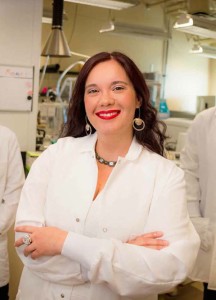
Olivia A. Graeve, Department of Mechanical and Aerospace Engineering, University of California, San Diego
Bio: Prof. Olivia A. Graeve (http://graeve.ucsd.edu/) joined the University of California San Diego in 2012 and is currently Jacobs Faculty Scholar and Professor in the Department of Mechanical and Aerospace Engineering, Director of the CaliBaja Center for Resilient Materials and Systems (http://resilientmaterials.ucsd.edu/), and Director of the Materials Science and Engineering Program. She holds a Ph.D. in Materials Science and Engineering (2001) from the University of California, Davis, and a Bachelor of Science degree in Structural Engineering (1995) from the University of California San Diego. Her area of research focuses on the design and processing of new materials for extreme environments, including extremes of temperature, pressure, and radiation. Prof. Graeve has been involved in many activities related to the recruitment and retention of women and Hispanic students in science and engineering and has received several prestigious awards including the Presidential Award for Excellence in Science, Mathematics and Engineering Mentoring in 2020. She has been inducted into the Tijuana Walk of Fame (2014), the Mexican Academy of Engineering (2016), the Mexican Academy of Sciences (2019), the Latin American Academy of Sciences (2022), and has been named Fellow of the American Ceramic Society (2017) and of the American Association for the Advancement of Science (2021).
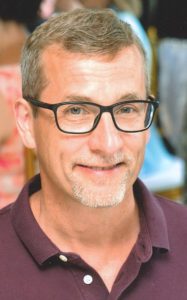
William Fahrenholtz, Missouri University of Science & Technology
Bill Fahrenholtz is a Curators’ Distinguished Professor of Ceramic Engineering in the Department of Materials Science and Engineering at the Missouri University of Science and Technology and Editor-in-Chief of the Journal of the American Ceramic Society from January 2017 through December 2022. He earned B.S. (1987) and M.S. (1989) degrees in Ceramic Engineering at the University of Illinois at Urbana-Champaign. He completed his Ph.D. at the University of New Mexico in 1992. He has been a Fellow of the American Ceramic Society since 2007 and Editor-in-Chief of the Journal of the American Ceramic Society since January 2017. Bill teaches courses on thermodynamics and technical communication. His current research focuses on the processing and characterization of boride and carbide ceramics. He has published over 200 journal papers and given over 100 invited presentations.
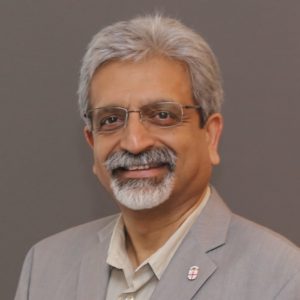
Nitin P. Padture, Brown University
Bio: Nitin P. Padture is the Otis E. Randall University Professor in the School of Engineering at Brown University, and until recently served as Director of Brown's Institute for Molecular and Nanoscale Innovation for eight years. He received B.Tech. in Metallurgical Engineering from Indian Institute of Technology, Bombay (1985), M.S. in Ceramic Engineering from Alfred University (1987), and Ph.D. in Materials Science & Engineering from Lehigh University (1991). Prior to joining Brown in 2012, he was College of Engineering Distinguished Professor, and founding Director of the NSF-funded Materials Research Science and Engineering Center (MRSEC), at The Ohio State University. Padture's research interests are in advanced ceramics and nanomaterials, for applications ranging from solar photovoltaics to jet engines for renewable energy and energy efficiency. Padture has authored or co-authored 280 publications, including 8 awarded patents, which have been cited over 30,000 times total (Google Scholar; h-index 90). Padture has delivered over 250 invited/ keynote/ plenary talks and seminars in the US and abroad. A Fellow of The American Ceramic Society, Padture has received that society's Roland B. Snow, Robert L. Coble, and Richard M. Fulrath awards. He is also a recipient of the ONR Young Investigator Award, and he is a Fellow of the American Association for the Advancement of Science. Padture received the Distinguished Alumnus Award from his alma mater, IIT-Bombay, and recently he was awarded the Brown University Presidential Faculty Award. He is Editor of Acta Materialia and Scripta Materialia.
Day 1, Session 1: ADVANCED COMPOSITES
Wednesday, March 8 11:00 a.m. - 12:35 p.m. EST

11:05-11:35 A.M. EST
Processing of CMCs: developing the fundamental understanding and tools needed for successful large-scale manufacturing
Jared Weaver, GE Research
Bio: Weaver is the Technology Manager for Ceramics and Composites at GE Global Research. He earned his Ph.D. in Materials from the University of California, Santa Barbara with his dissertation on the development of robust oxide-oxide CMCs. Since 2012, Jared has been at GE Global Research where his work has included leading the development of repair technologies for GE’s commercial melt infiltrated SiC/SiC CMCs, development of CMCs for nuclear applications, and development of next generation, higher temperature capable CMCs for aerospace applications. He has 6 published papers and 10 US patents.
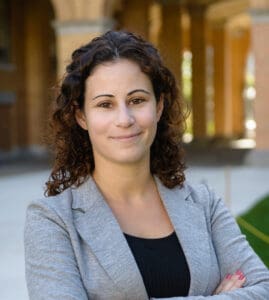
11:35 A.M. - 12:05 P.M. EST
Process modeling of polymer-derived composites
Marianna Maiaru, University of Massachusetts, Lowell
Bio: Dr. Maiaru (Associate Professor in Mechanical Engineering, UMass Lowell) is an expert in Integrated Computational Materials Engineering (ICME), virtual manufacturing, and computational mechanics. She received her Ph.D. in Aerospace Engineering as a collaboration between Politecnico di Torino in Italy and the University of Michigan. Her research interests include composite structures, damage mechanics, multi-scale analysis, higher-order finite elements, and additive manufacturing. Maiaru has received numerous grants from NASA, NSF, and the Air Force, including the AFOSR Young Investigator Program award in 2020 and the NSF CAREER award in 2022. She received the DEStech Young Researcher Award in 2021 and the AIAA ICME Prize in 2020 and 2022.
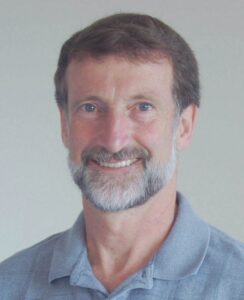
12:05-12:35 P.M. EST
Applications and properties of ceramic composites
David Marshall, University of Colorado, Boulder
Bio: Dr. David B. Marshall, Research Professor, Aerospace Engineering Sciences Department, University of Colorado, Boulder. Previously Senior Fellow and Principal Scientist, Teledyne Scientific and Imaging. Ph.D., in Physics, Monash University, Melbourne, Australia, 1975. Member of the National Academy of Engineering, Distinguished life member of the American Ceramic Society. Research background; strengthening, toughening, reliability, microstructural design and processing of advanced materials, especially fiber reinforced composites and structural ceramics. Development of textile based ceramic composites for high temperature applications in rockets, turbines and hypersonics.
BREAK: 12:35-12:50 P.M.
Day 1, Session 2: ADVANCED COATINGS
12:50 - 2:30 P.M. EST
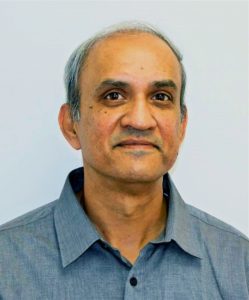
12:50-1:20 P.M. EST
Multifunctional thermo-structural coatings enabled by layered manufacturing
Sanjay Sampath, Stony Brook University
Bio: Dr. Sanjay Sampath is currently Distinguished Professor of Materials Science at Stony Brook University (SUNY) and director of the Center for Thermal Spray Research (CTSR, www.sunysb.edu/ctsr) an interdisciplinary industry-university partnership in the field of thermal spray materials processing and surface engineering. CTSR was created in 1996 through the National Science Foundation’s Materials Research Science and Engineering Centers program. He received his B.Tech. from IIT-BHU and Ph.D. from Stony Brook in 1989. After graduating, he spent four years at GTE Sylvania involved in research, development, and processing of refractory metal compounds and composites. Upon joining the faculty at Stony Brook University in 1993, he has directed research efforts on various federal and industrially funded programs. Under the auspices of the NSF Center, he directed a group of a dozen or so interdisciplinary faculty members towards fundamental understanding of thermal spray processes, materials and applications. The self-sustaining Center (since 2005) is home to the Industrial Consortium for Thermal Spray Technology comprising 35 leading companies aimed at knowledge transfer from fundamental research to applications. He was also principal investigator on the DARPA Mesoscale Integrated Conformal Electronics (MICE) project enabling 3D printing of sensors via direct write thermal spray technology. Dr. Sampath has 220 journal publications and 15 patents to his credit, and is winner of several best paper awards. He has advised more than 60 M.S. and Ph.D. students, over 20 post-doctoral fellows, and more than 100 undergraduates. He received the SUNY Chancellor’s Award for Excellence in Scholarship and Creative Activity, was elected Fellow of ASM International and the American Ceramic Society, and is recipient of a 2007 R&D 100 award for developing direct write technology. In 2011, he was recognized as a State University of New York Distinguished Professor. In 2015 he was inducted into the ASM Thermal Spray Hall of Fame. In 2017 he received the Application to Practice Award from TMS, in 2019 he received the John Jeppson Award from the American Ceramic Society, and in 2020 he received the ASM Albert Sauveur Award.

1:20-1:50 P.M. EST
Main issues for a fully predictive plasma spray model
Armelle Vardelle, University of Limoges
Bio: Prof. Armelle Vardelle joined the University of Limoges, France in 1981. She holds a Ph.D. in Physics (1979) and a “doctorat d’état” in Ceramics Sciences (1987). Her research lie in the area of thermal spray processes and coatings, modelling of plasma torch and plasma spray process, green manufacturing and life cycle assessment. Her research works have resulted in over 120 peer-reviewed scientific journal publications and more than 150 publications in international and national conference proceedings. She has received several prestigious awards including the Legion of Honour (highest French order of merit for military and civil merits) (2017); Hall of Fame Thermal Spray Society (2016); Fellow of the International Plasma Chemistry Society (2015); Award ANOORA 2013 (National Association of Air Force officers); Fellow of ASM International (2012) and Distinguished Professor of French Universities (2011). Prof. Vardelle is also involved in humanitarian associations fighting against social inequalities and for peace.
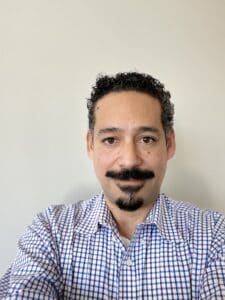
1:50-2:20 P.M. EST
Ceramic thin films for optical and magnetic applications
Javier E. Garay, University of California San Diego
Bio: Javier E. Garay is a Professor in the Department of Mechanical and Aerospace Engineering and the Materials Science and Engineering Program at the Jacobs School of Engineering at the University of California San Diego. He is also the Associate Dean for Research in the Jacobs School of Engineering. He received his B.S. in Mechanical Engineering, his M.S. and Ph.D. in Materials Science and Engineering all from the University of California, Davis. His research focuses on materials processing, property measurements and the integration of materials in devices. The application spaces are in optical devices, magnetic devices and thermal energy storage/management. He is also particularly interested in understanding the role of the length scale of nano-/ micro-structural features on light, heat conduction and magnetism. Prof. Garay is on the editorial advisory board for Applied Physics Letters and is a Deputy Editor for AIP Advances.
Day 2 Session 1: BULK MATERIALS
Thursday, March 9 11:05 A.M. - 12:35 P.M. EDT

11:05-11:35 A.M. EST
What is next in the manufacturing of UHTCs?
Carolina Tallon, Virginia Polytechnic Institute and State University
Bio: Dr. Carolina Tallon is an Assistant Professor in the Department of Materials Science and Engineering and one of the members of the Advanced Manufacturing Team of the College of Engineering, at Virginia Tech. Dr. Carolina Tallon’s research focuses on the near-net-shaping and advanced manufacturing of ceramics for extreme environments, such as hypersonics, nuclear reactors and high temperature engines, with an emphasis on developing techniques that allow bulk large size complex geometry components with tunable microstructure, with the same features of the lab scale counterparts. Her research group specializes in ultra-high-temperature ceramics (UHTCs) and manipulation of the microstructure through innovative processing. She has published 29 peer-reviewed journal papers, 7 proceedings and 2 book chapters, and has contributed to more than 60 presentations (including 1 keynote and 10 invited talks) in technical conferences. She was one of the co-chairs of the International Conference “Ultra-High Temperature Ceramics: Materials for Extreme Environment Applications V”, USA, 2022, and she was also the co-chair of the third conference of this series in Australia, 2015.

11:35-12:05 A.M. EST
Perfecting defect modeling: The science and engineering of refractory ceramics computational discovery and design
Axel van de Walle, Brown University
Bio: Axel van de Walle is a Professor in the School of Engineering at Brown University. He received his B. Eng. in Engineering Physics at the Ecole Polytechnique de Montreal and his PhD in Materials Science and Engineering at MIT. He spent his Postdoctoral years at Northwestern University. Before obtaining early tenure at Brown, he was an Assistant professor in the Engineering and Applied Science Division at the California institute of Technology. He is the developer of numerous open source modeling software used throughout the materials science, solid-state physics, chemistry and geology communities.

12:05-12:35 P.M. EST
Thermal protections system materials for applied hypersonics
Erica L. Corral, University of Arizona
Bio: Dr. Erica L. Corral is a subject matter expert in high temperature hypersonic materials with over fifteen years of experience in manufacturing ultra-high temperature ceramics and studying their behavior under high enthalpy hypersonic flow environments. She has been contributing to hypersonic projects through her work at academia, industry, and government labs. She is an Associate Professor of Materials Science & Engineering at The University of Arizona (UArizona) where she holds the prestigious title Distinguished Scholar there. She serves on the Governance Board to the University Consortium for Applied Hypersonics (UCAH) which is the only university/industry/government consortium for applied hypersonics in the USA. As UCAH Co-Director she leads the Technology Transition Committee to enable technology transition to the warfighter. She also serves as Co-Director to the Arizona Research Center for Hypersonics to support the southern Arizona defense needs. Erica received her Ph.D. in Materials Science from William Marsh Rice University and spent three years as a postdoc at Sandia National Laboratories working on a multidisciplinary hypersonics projects. She has brought in over $18M in research expenditures through her research portfolio at UArizona.
BREAK: 12:35-12:50 P.M.
Day 2 Session 2: EMERGING PROCESSING AND COMPUTATIONAL TECHNIQUES
12:50 - 2:30 P.M. EST

12:50-1:20 P.M. EST
Integrated 3D-printing and spark plasma sintering of transparent ceramics
Elisa Torresani, San Diego State University
Bio: Dr. Elisa Torresani received her Ph.D. in Materials Science and Engineering from University of Trento (Italy) in 2016. In 2017, she started her postdoctoral research in the Department of Mechanical Engineering at San Diego State University, where she also taught a graduate level class on Mechanics of Sintering. Dr. Torresani’s research is focused on understanding the fundamentals of sintering and developing constitutive models of sintering which enable the prediction of the macroscopic and microscopic behavior of porous bodies (shape distortion, density distribution, grain growth, etc.) Her current research emphasizes the coupling of experimental and theoretical investigations for a better understanding of the chemical and physical phenomena that drive and influence sintering-assisted additive manufacturing and field-assisted sintering processes. She has authored 30 refereed journal publications and a patent. One of her papers published in Metallurgical and Materials Transactions A has been awarded with AIME Champion H. Mathewson Award.

1:20-1:50 P.M. EST
Evolution of synthesizability descriptors: reaching high-entropy metal carbonitrides and borides
Stefano Curtarolo, Duke University
Bio: Prof. Curtarolo is an AI-Materials Scientist. His research interests lie at the intersection of materials science, artificial intelligence, and autonomous discovery of new materials. His current research focuses on theory and discovery of disordered super-hard and ultra-high-temperature ceramics and machine learning approaches to phase stability of alloys. After graduating from MIT, he joined Duke University in 2003. Since then, he has received many national/international awards and recognitions (e.g., ONR Yip, NSF Career, PECASE, IUPAP, Humboldt-Bessel, Highly-Cited 2021). At Duke, he directs the Center for Autonomous Materials Design, which has started and currently maintains the AFLOW international data-consortium about materials-information and tools for millions of compounds. The Center and the consortium have also organized several educational [aflow.org/aflow-school/] and outreach initiatives in accelerated materials design [aflow.org/seminars/]. Curtarolo currently leads a MURI team, awarded in 2021, on “SPICES: Spinodal-hardened high-entropy ceramics”.
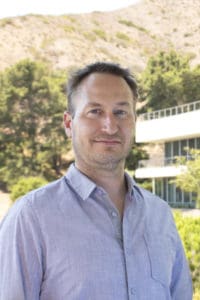
1:50-2:20 P.M. EST
Properties and applications of 3D printed ceramics
Tobias Schaedler, HRL Laboratories
Bio: Tobias A. Schaedler is currently the manager of the Architected Materials and Adaptive Structures Department at HRL Laboratories, LLC in Malibu, California. He received his Ph.D. in Materials from the University of California, Santa Barbara, in 2006 following undergraduate studies in the same field at the University of Bayreuth in Germany. After a stint at General Electric Aviation, he joined HRL in 2009 where he has held senior scientist positions and served as founding director of the Center for Additive Materials. Dr. Schaedler has authored or co-authored 39 papers and holds 43 U.S. patents. He has received the 2012 Breakthrough Innovation Award for the ultralight microlattice, the 2016 Emerging Technology Award by the RadTech Association for the first-ever UV additive manufacturing of polymer-derived ceramics, and the 2017 R&D 100 Award and 2018 Edison Award for 3D printing of ceramics. Dr. Schaedler is working on developing architected materials and additive manufacturing processes for automotive and aerospace applications. His current efforts focus on 3D printing of high temperature ceramic composites as well as multi-material additive manufacturing at the microscale to improve 3D integration of microelectronic subsystems.
Registration rates
| Regular rate | $125 |
| ACerS/MRS member rate* | $100 |
| Student rate | $45 |
| ACerS/MRS student member rate* | $25 |
Sponsors

